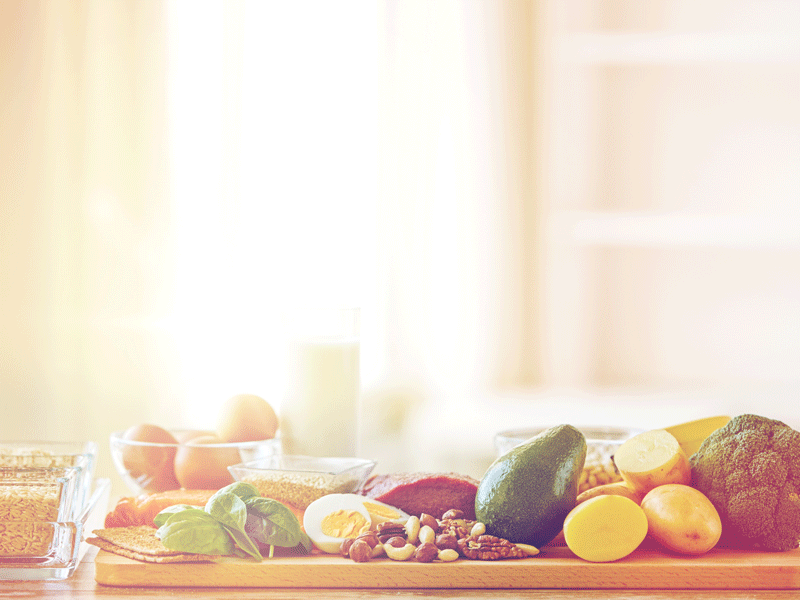What is a balanced diet?
This diet encourages a ‘balanced’ intake of the three main nutrients in life with government guidelines whereby you should aim to eat approximately 50-55% of your daily intake from carbohydrates ; 15% to 20% protein and 25 to 30% fats.
When choosing carbohydrates we suggest you opt that those who have glycemic load to keep you feeling fuller for longer. Avoid adding sugar pastries and biscuits.
Fats should be divided equally: 1/3 saturated fats from meat, butter, cheese. 1/3 polyunsaturated fat from oily fish, rapeseed oil, watch your diet and eat a minimal amount of cakes, crisps, seeds. 1/3 monosaturated fats from olive oil, avocado.
Ensure your plate contains
- Fist size of starchy carbohydrate like brown rice and pasta or potatoes, half full with vegetables.
- Small piece of lean protein like fish, chicken, beef, eggs, or legumes and cheese.
Principles of a balanced diet
- Ensure your plate contains at least 3 types of vegetables for variety, preferably in different colours.
- Choose wholegrain cereals, brown pasta and rice
- Snack on vegetables, fruits, nuts and seeds
- Trim or remove fat from meat
- Reduce intake of red mead to 1-2 portions per week
- Choose fish as a healthy alternative to red meat
- Aim for at least one portion of oily fish per week
- Cook with small amounts of fat, try an oil mist, try steaming, boiling or baking
- Choose low fat dairy, especially cheese.
How to make right choices?
Instead of this... Try this
|
White bread (made out of refined wheat flour)
|
Whole grain wheat or rye bread |
|
Sugary sweets such as cakes, candies, cookies, biscuits, pastries |
Fresh fruits and berries or a few dried fruits with some nuts.
|
|
White refined rice and pasta out of refined wheat flour. |
Brown rice and pasta. Healthy alternatives are also quinoa, millet, and buck wheat. |
|
Instant flakes, crunchy sugary mueslis, cornflakes. |
Use natural whole grains flakes (oats) and make muesli yourself. |
|
Margarine on the bread. |
Avocado on bread or sandwich or use small amount of butter. |
|
Sunflower or canola oil in baked goods. |
Olive or coconut oil for baking. |
|
Whipped cream, sugary patty yogurt. |
Natural yogurt sweetened with fruits and berries. |
|
Fatty cheeses. |
Low-fat cheeses like mozzarella, cottage chees, low far quark, half-fat cheddar. |
|
High fat spreads, mayonnaise and rich sauces made with cream, cheese or eggs. |
Spray a little of olive oil and fresh lemon juice on salad or pasta. |
|
High fat meats like pork, lam, sausages and processed meats, skin of poultry. |
Low fat meat, poultry without skin, fish and sea food, beans and lentils. |
|
Soft drinks, sugary fruit juices. |
Pure water, herbal, green or red tea, occasionally natural juices mixed with water. |
|
Deep-fried foods |
Slightly cooked or steamed foods. |
|
Snack foods such as crisps. |
Try crunchy vegetables cut in small pieces with a dip sauce such as hummus. |

